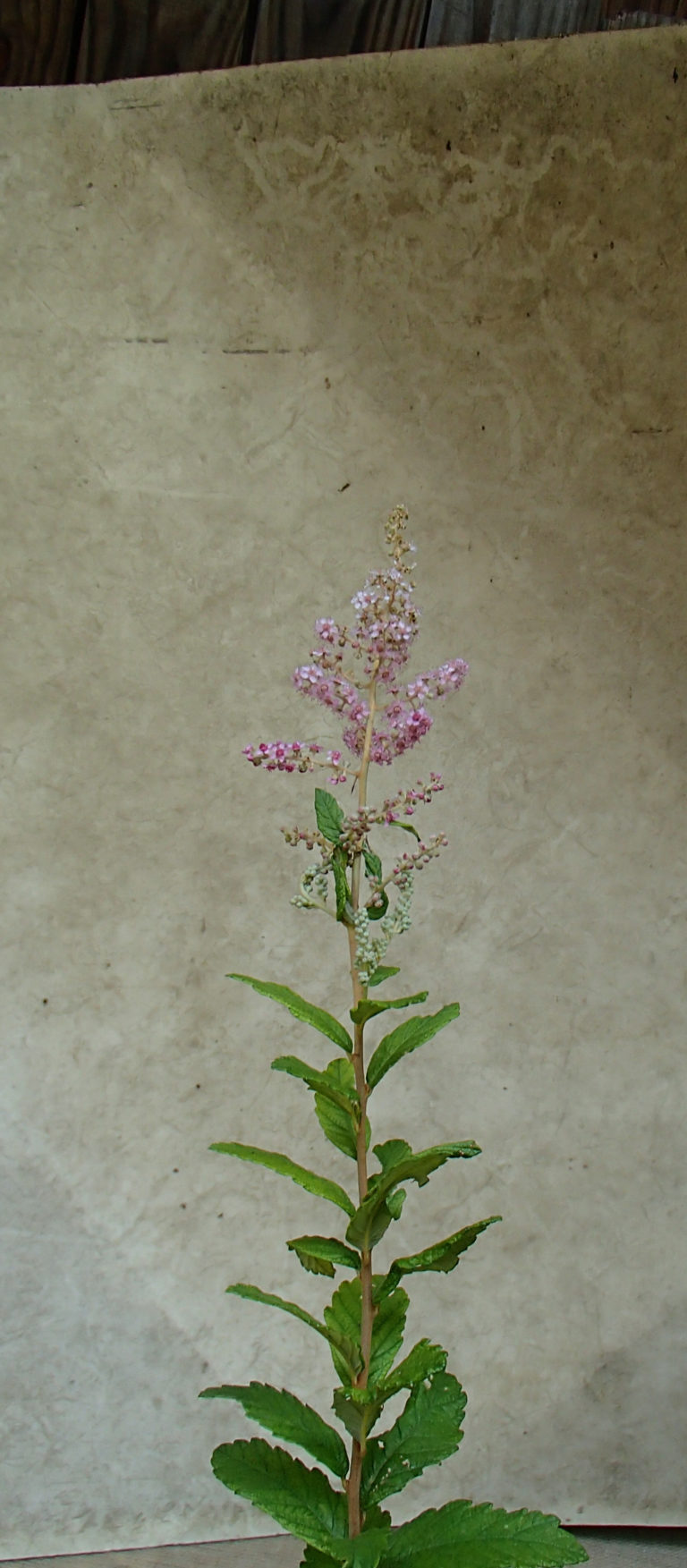Our area (NC and surrounding states) represents the southern tip of the range for this shrub, which is much more common to the north. In NC and Va it occurs in some mountain counties and some coastal plain/lower piedmont counties. The common name “Steeplebush” reflects it’s pink steeple-like blooms in late summer. The wetland indicator status for Steeplebush is FACW, as it is mostly found in wetlands, but can also occur in upland habitats. This shrub grows as a rhizomatous colony of single stems, with attractive, peeling bark and alternate, leathery leaves. It thrives in full sun, but can tolerate a little shade. Not only do Steeplebush’s flowers attract butterflies but the handsome brown seed heads are pleasant through the winter, and attract birds also. These characters make Steeplebush an excellent choice for naturalizing in a sunny, damp or wet area.
NURSERY HOURS
Wednesday: 10-4 Thursday: 10-6 Friday-Saturday: 10-4 Sunday: 12-4
Spiraea tomentosa

Key Info
Scientific Name: Spiraea tomentosa L.
Common Names: Steeplebush, Hardhack
Family Names: Rosaceae
Plant Type: Tree / Shrub
Leaf Retention: Deciduous
Flower Color: Pink
Special Characteristics: Tolerates wet conditions, Rhizomatous, Good cut flowers, Attracts bees, Long blooming period, Attracts butterflies, Reported to be deer resistant., Attracts birds
Additional Info
Habit: This shrub is 2-4' tall, more or less erect. Its usually unbranched central stem is terete and brown, at first with hairs but becoming woody over the growing season. Rhizomatous, it forms a thicket of upright unbranched stems, orange-yellow bark peeling off. The woody stems may or may not die back to the ground in winter. The root system is woody and branching.
Height: 3' to 6'
Soil Conditions: Medium to wet, acidic, sandy, loamy, clay soils.
Leaves: Leaves are elliptical, toothed, leathery, 1½–3 inches long x ½–1¼ inches across, and coarsely toothed along the margins. They are glabrous and dark green above, paler below with woolly hairs along the veins. Fall color is negligible.
Flowers (or reproductive structures: The central stem supports a dense, pyramidal panicle, 4-8 inches long and 1-3 inches across, of scentless pink flowers. Individual flowers are just under ¼ inch across and consist of 5 rounded, wrinkly petals, 5 pistils and numerous exserted stamens. They have a long bloom period, from mid-summer to early fall, in which the flowers bloom from the top of the panicle downward, gradually turning brown.
Fruit: By fall each flower has developed 5 small, brown, oval follicles each of which split open to release several seeds to the wind.
Natural Distribution: Steeplebush is found in high quality wetland habitats -- wet and sandy shrub prairies (where this species may dominate), wet meadows, wet pastures, boggy areas, marshes, fields, and lake margins.
USDA Hardiness Zone: 4 to 8
USDA Wetland Indicator Status in NC: FACW
Pollination: Bees, wasps, butterflies and other insects.
Wildlife Connections: The flowers attract primarily bees, flies, and beetles but also butterflies (some rare); abundant pollen is produced, but only small amounts of nectar. Moth and butterfly larvae feed on the leaves, flowers, buds and developing seed capsules. Leaf and stem tissues are bitter and astringent and not preferred by deer.
Propagation: By seed or by cuttings.
